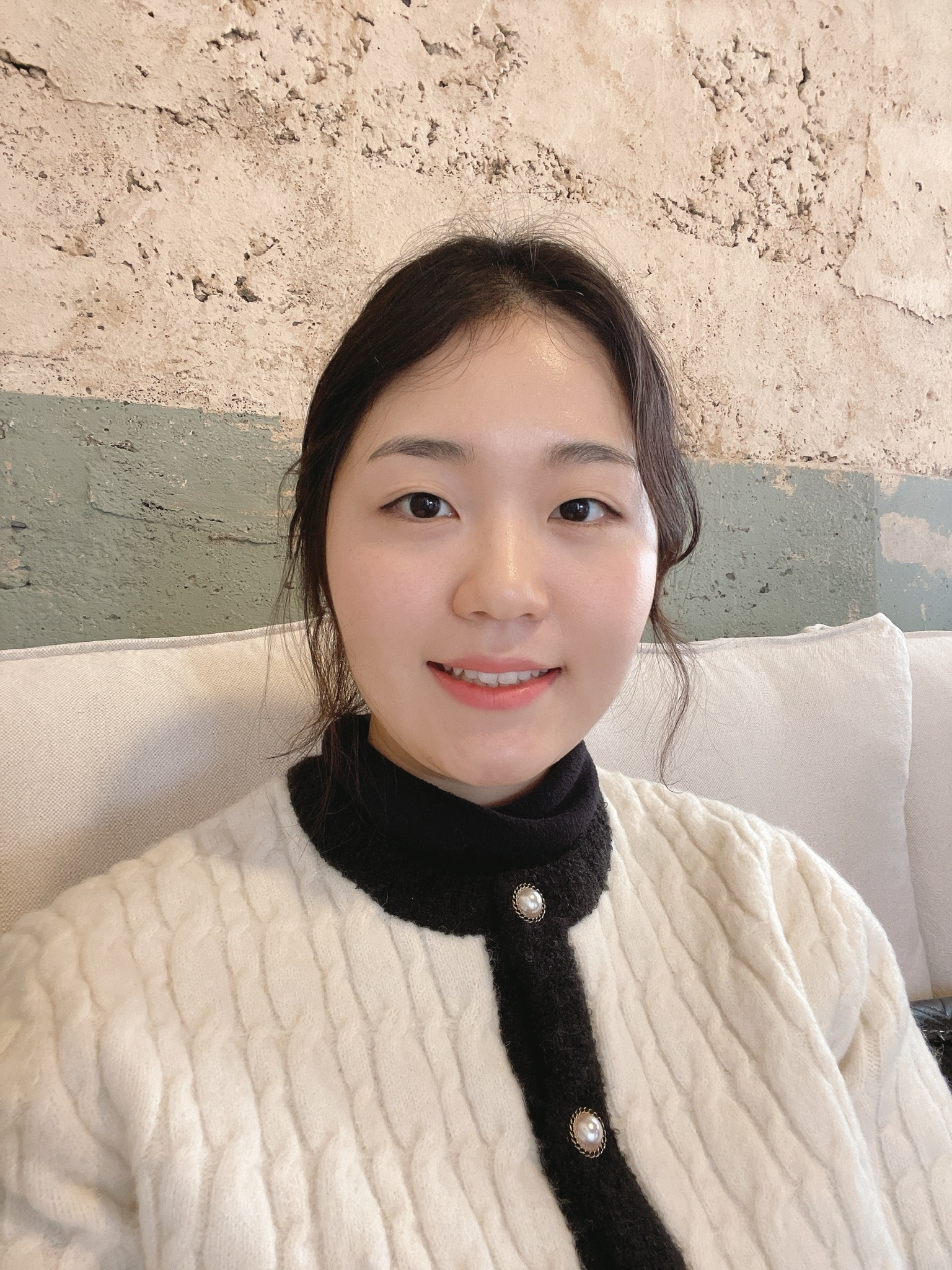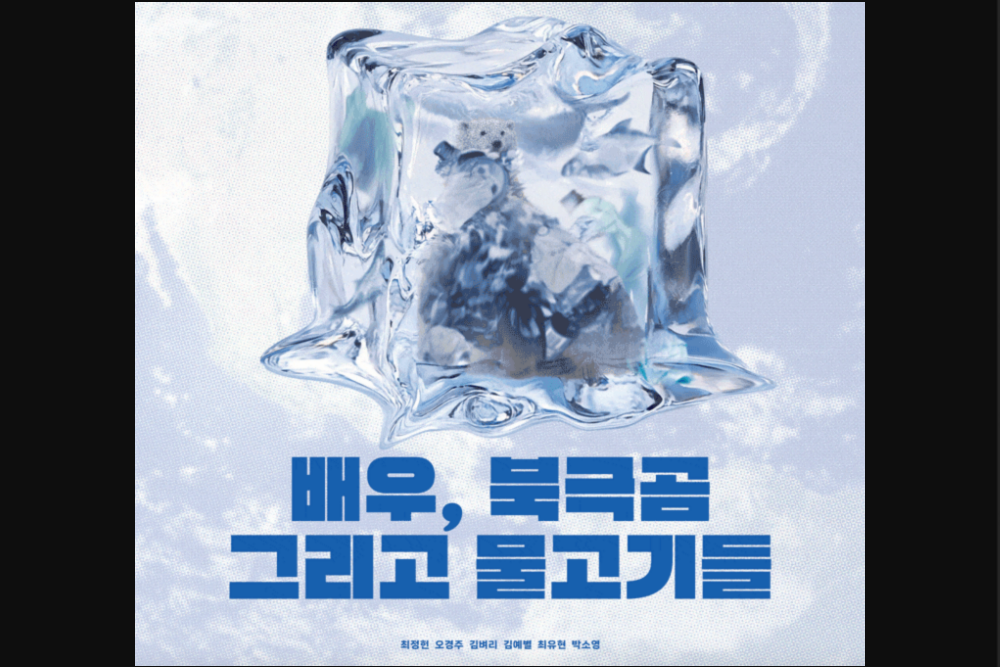1. The Rise of Sustainable Travel
Changes in the Tourism Industry After COVID-19
The tourism industry accounts for 8% of global greenhouse gas emissions. Carbon emissions from aviation make up about 2.5% of worldwide emissions, and a single long-haul flight can release more carbon in just a few hours than the average person in 56 countries emits in an entire year. Since tourism resumed after COVID-19, overtourism has negatively affected the lives and environments of local residents, leading some destinations to restrict visitor numbers. With the rise of sustainable travel, the tourism industry is working to reduce greenhouse gas emissions and promote coexistence with local communities.
In South Korea, village tourism in Jeju Island stands out as a successful example of sustainable travel. The Jeju Tourism Organization has been managing the village tourism system since 2013 and operates “KaReum Stay” as a control tower for this effort. Through KaReum Stay, Jeju has received various international awards recognizing its village tourism initiatives. The United Nations World Tourism Organization (UNWTO) evaluates cultural and natural resources, promotion and preservation of cultural assets, social, economic, and environmental sustainability, tourism development and value chain integration, governance, and prioritization of tourism. At the 3rd Best Tourism Village Contest, Jeju’s KaReum Stay villages, Sehwa Village and Dongbaek Village, were selected as winners. Additionally, KaReum Stay won the 2023 PATA Gold Award (Pacific Asia Travel Association), a prestigious award in the tourism industry, in the Sustainability and Social Responsibility (Community-based Tourism) category. In 2024, Jeju’s Wellness Tourism Policy received the Gold Award in the Global Marketing Campaign category. At the heart of all these achievements is KaReum Stay, the integrated brand for Jeju village tourism.
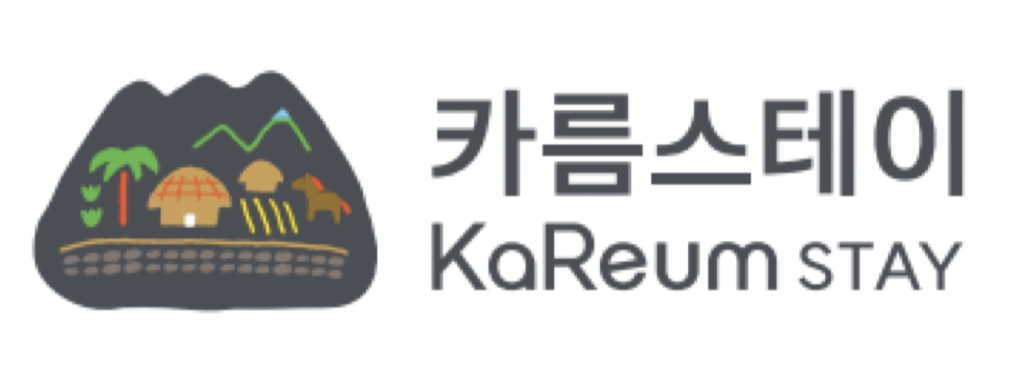
(Source: KaReum Stay Brand Book)
KaReum Stay offers a village travel experience in Jeju where visitors can live, feel, and learn in the local communities. Instead of continuously moving around and consuming carbon, travelers stay leisurely in small villages across Jeju and engage in hands-on experiences. This makes KaReum Stay a great example of sustainable tourism. Hoping for more sustainable travel practices to grow within Korea’s tourism culture, we aim to learn more about slow travel experiences like KaReum Stay.
Sustainable Travel
‘Sustainable travel’ refers to trips that meet the needs of both visitors and local communities while considering the economic, social, and environmental impacts in the present and future. Global hotel chains like Hilton have eliminated single-use toothbrushes and slippers and replaced physical menus or brochures in guest rooms with QR codes. Lady Elliot Island Eco Resort in Australia offers ecologically sustainable tourism to protect and improve the surrounding natural environment and local community. To provide guests with a genuine eco-tourism experience, the resort does not equip rooms with phones, TVs, or radios and supplies 100% of its power from renewable solar energy on clear days. In June 2023, the UNWTO, together with the G20 Tourism Working Group, developed a roadmap to place tourism at the center of the 2030 Sustainable Development Agenda. This roadmap outlines five priority areas for achieving sustainable tourism and includes goals and recommended actions for each area.
- Green Tourism: Environmentally sustainable tourism aims to minimize impacts on the environment and local culture while helping to preserve regional ecosystems and promote employment and income generation.
- Digitalization: Digital technology can not only strengthen a circular economy approach but also provide visitors with more efficient and safer experiences. Additionally, it can enhance productivity, improve infrastructure management, and promote progress in other priority areas.
- Technology: Jobs in the tourism industry range from high-skilled to low-skilled opportunities, providing chances for people with diverse educational backgrounds and experiences. Additionally, by empowering local communities, tourism becomes a powerful tool for poverty alleviation and offers opportunities to vulnerable groups such as indigenous people, persons with disabilities, women, and youth.
- Small and Medium Tourism Enterprises: Small and medium tourism enterprises account for 80% of all tourism businesses worldwide. This roadmap emphasizes the importance of public policies and public-private partnerships in addressing key challenges faced by these enterprises, such as financing, marketing, and technology gaps.
- Destination Management: Destination management refers to the overall coordination and administration of all elements that make up a travel destination—that is, the products, services, activities, and experiences along the tourism value chain. This roadmap proposes a series of measures to strengthen public-private-community partnerships and improve destination management.
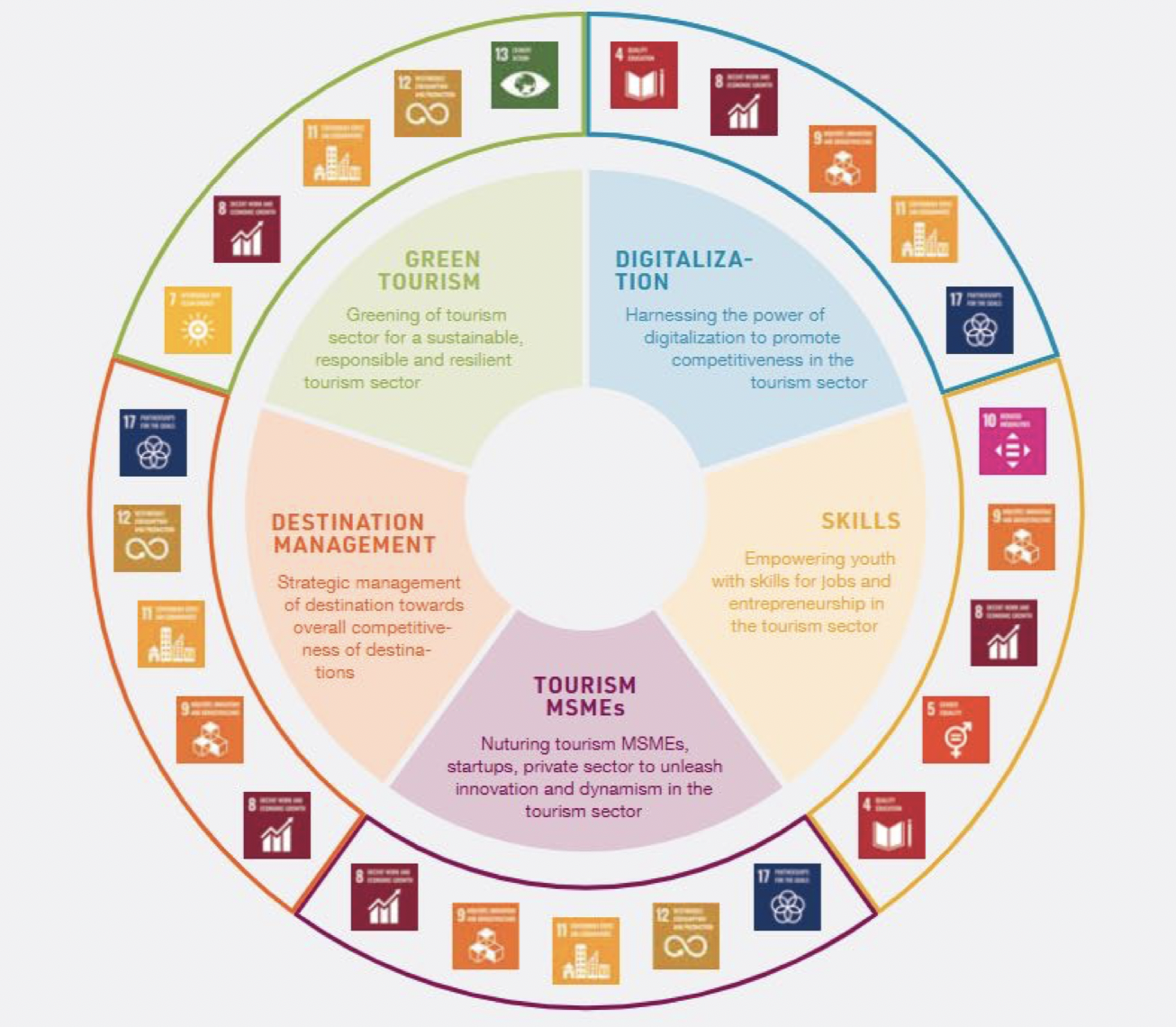
<Figure 2> Five Priority Areas for Achieving Sustainable Tourism in G20 Countries
(Source: UN Global Compact, 2023)
2. Jeju Village Travel, KaReum Stay
Making the Villages of Jeju, My Village,
What is KaReum Stay? The name “KaReum Stay” is a combination of the Jeju dialect word “KaReum” (meaning a small village or neighborhood) and “Stay” (meaning to stay or reside). The KaReum Stay project currently includes villages in Seogwipo City, such as Hahyo, Hannam, Ugi, Sinhung, Hogeun, Gashi, and Mureung-ri, as well as villages in Jeju City, including Sehwa, Jeoji, Sinchang, Susan, Gyorae, and Gimnyeong-ri. Jeju Village Travel KaReum Stay offers an experience that goes beyond simple tourism. It proposes finding balance and harmony in life through the decision to pause, discovering the village, and beginning relationships. The Eastern part of Jeju, known as DongKaReum, consists of three regions: Gujwa-eup, Seongsan-eup, and Pyoseon-myeon. This area offers both the turquoise-colored sea and the mountains, with scenic spots like Bijarim Forest and the Saryeoni Forest Path, allowing visitors to enjoy both the sea and the mountains.

(Source: KaReum Stay Official Website)
‘SeoKaReum’ refers to the four regions in the western part of Jeju: Hallim-eup, Hancheon-myeon, Daejeong-eup, and Andeok-myeon. In addition to the beautiful sunset views, there are various cultural facilities, galleries, exhibition halls, and experience centers located in this area.
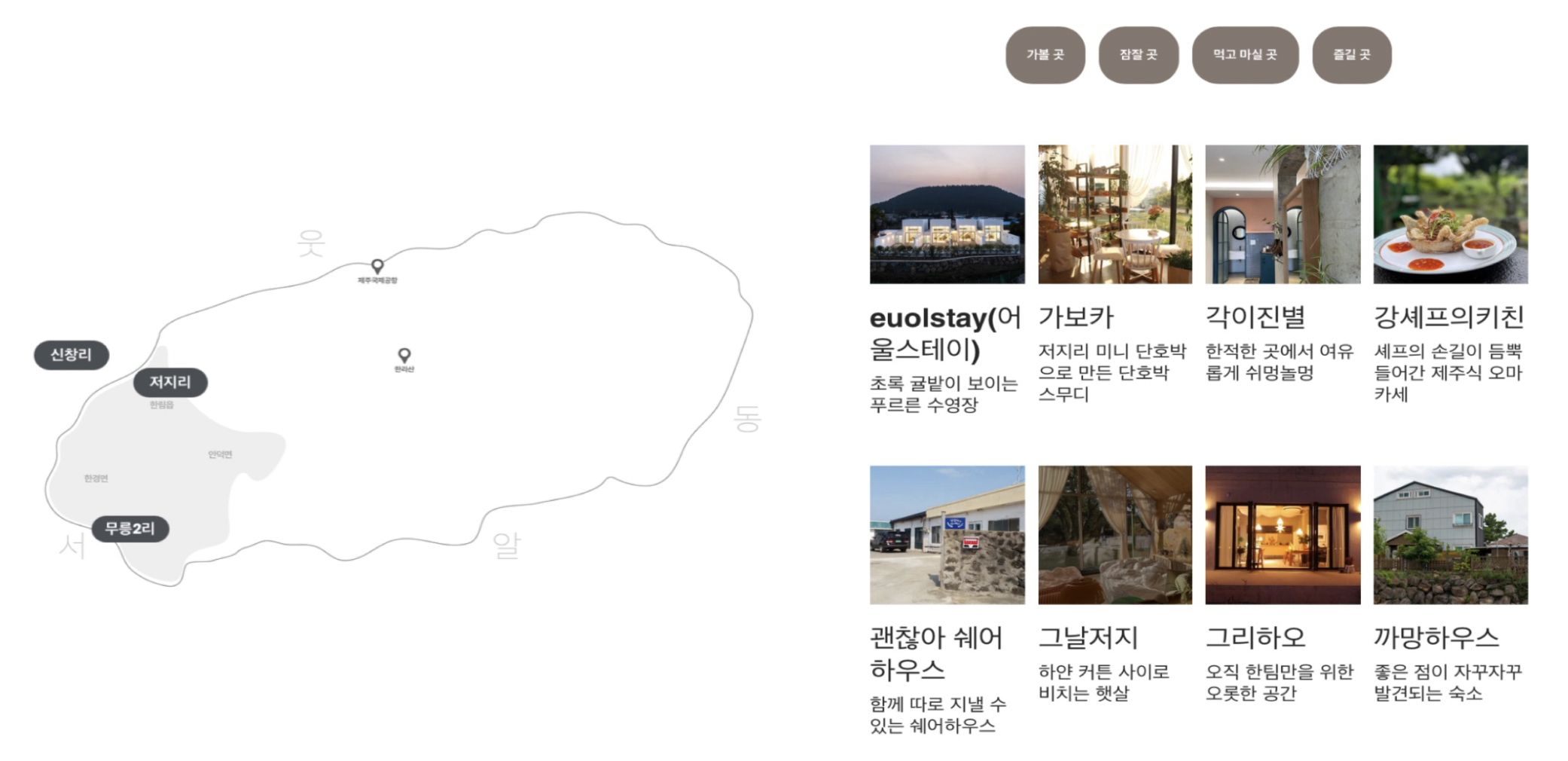
(Source: KaReum Stay Official Website)
‘AlKaReum’ refers to the villages in the southern part of Jeju, including Ho-geun-dong, Hahyo Village, Hannam-ri, Ugi-ri, and Sinhung-ri, located in the three regions of Jungmun, Seogwipo City, and Namwon-eup. Known as the warmest area in Jeju, each village has its own unique charm.
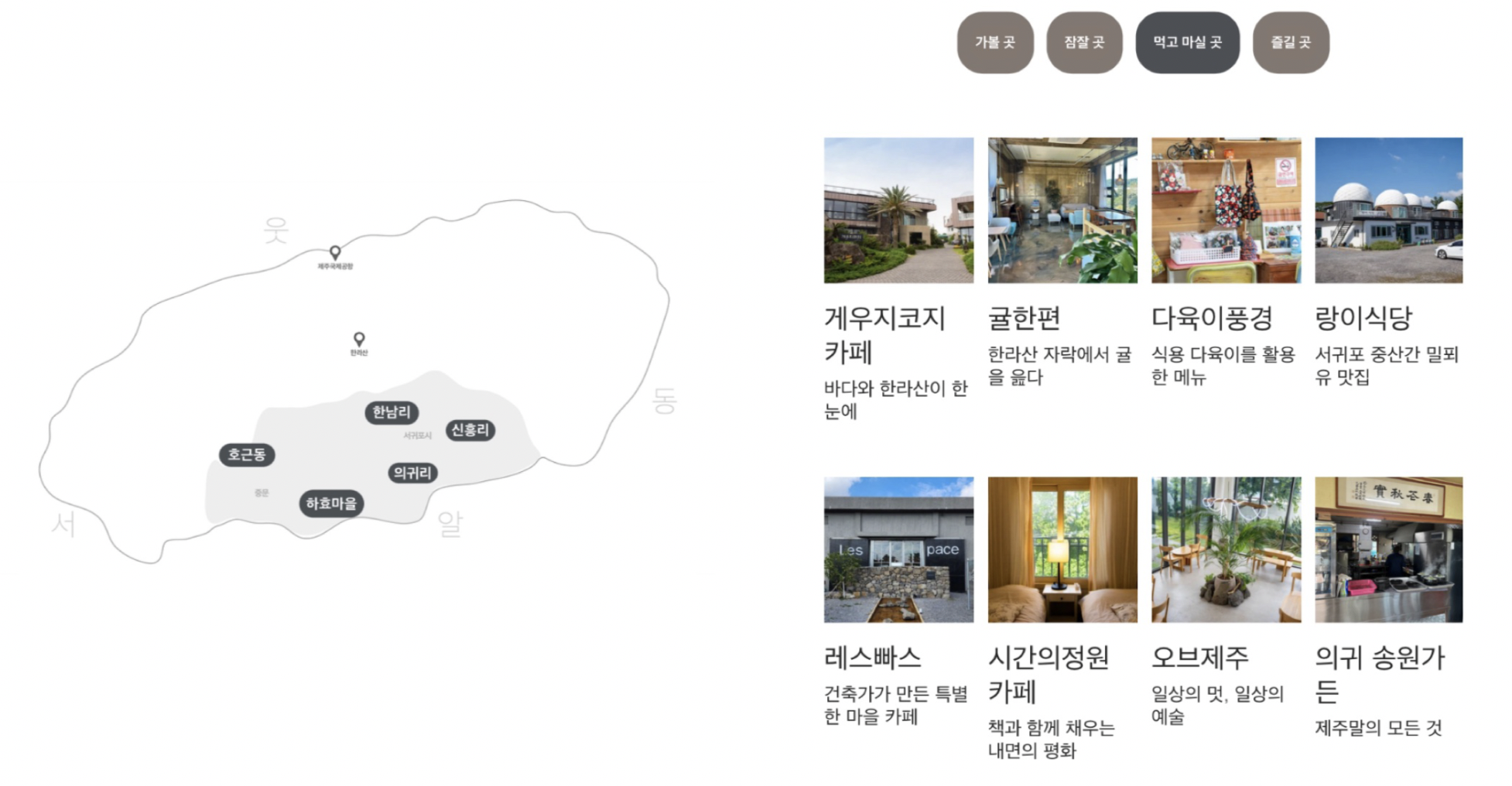
(Source: KaReum Stay Official Website)
‘UtKaReum’ refers to the two regions in the northern part of Jeju: Susan-ri in Aewol-eup and Gyorae-ri in Jocheon-eup. It is located close to the city center of Jeju, and can be reached in about 30 minutes by car.

(Source: KaReum Stay Official Website)
KaReum Stay Villages
Among the various villages in the KaReum Stay project, let’s take a closer look at Sehwa Village and Dongbaek Village, which were selected as UNWTO Best Tourism Villages.
Sehwa Village
Sehwa-ri is located in Gujwa-eup, Jeju City. The old name of Sehwa was “Ganeungot”, which refers to the village’s landform that resembles a narrow cape, and this is where the name originated. In Sehwa-ri, the Sehwa Village Cooperative serves as the core of the community, operating a regional tourism hub known as the Jilgeuraengi Base Center. They offer experiences such as workations (remote working vacations) and operate local cafes. Sehwa also promotes and preserves its cultural heritage through tourism products that feature intangible cultural heritage, such as the Haenyeo (women divers), the important agricultural heritage of stone walls (Batdam), and regional specialties like carrots.
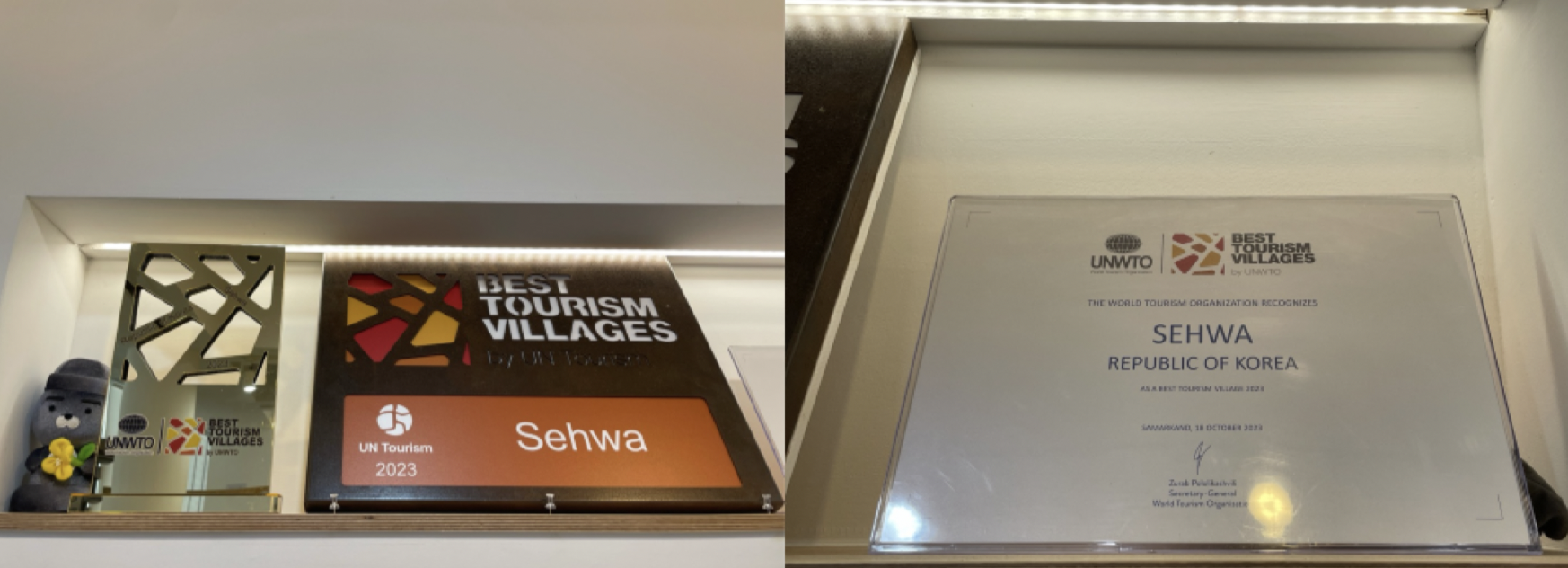
– Sehwa Village Cooperative
Sehwa Village had been experiencing a decline in community spirit and cohesion due to issues such as the migration of younger generations to urban areas, the influx of immigrants, and an aging population. As a result, community interest and participation were gradually decreasing. However, in 2019, 477 local residents (members) united with the goal of creating a village where neighbors live together, and they established the Sehwa Village Cooperative.
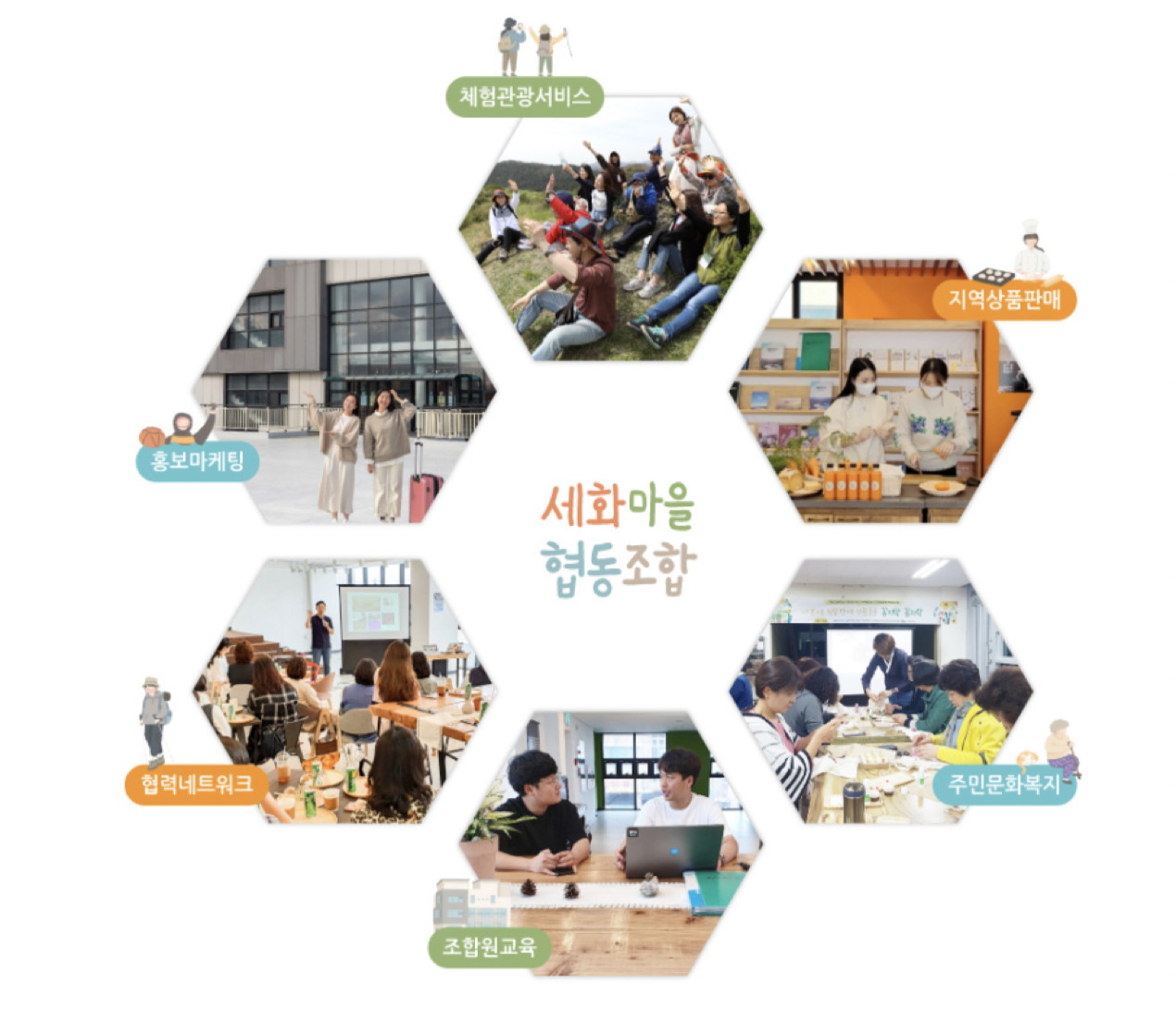
(Source: Sehwa Village Cooperative Website)
– Jilgeuraengi Gujwa Base Center Operated in Sehwa Village
The Jilgeuraengi Gujwa Base Center was established as part of a village project to meet the diverse cultural and leisure needs of the residents of Gujwa-eup, and to create a space that fosters mutual interaction between visitors and local residents. Led by the residents of Sehwa-ri, the center was built by expanding and renovating the existing Sehwa-ri Comprehensive Welfare Town, transforming it into a multi-functional cultural space for the community. “Jilgeuraengi” is a Jeju dialect word meaning “gently” or “softly,” reflecting the hope that this space will serve as a central gathering point where local residents can relax, enjoy, and share in their daily lives, while also becoming a comfortable and welcoming landmark for visitors who will return. The first floor of the Jilgeuraengi Center houses the Sehwa-ri Office, while the second floor operates a café and offers local food products and items from residents’ flea markets available for self-service. The third floor is currently used as a shared office space, and the fourth floor is operated as Sehwa Stay.
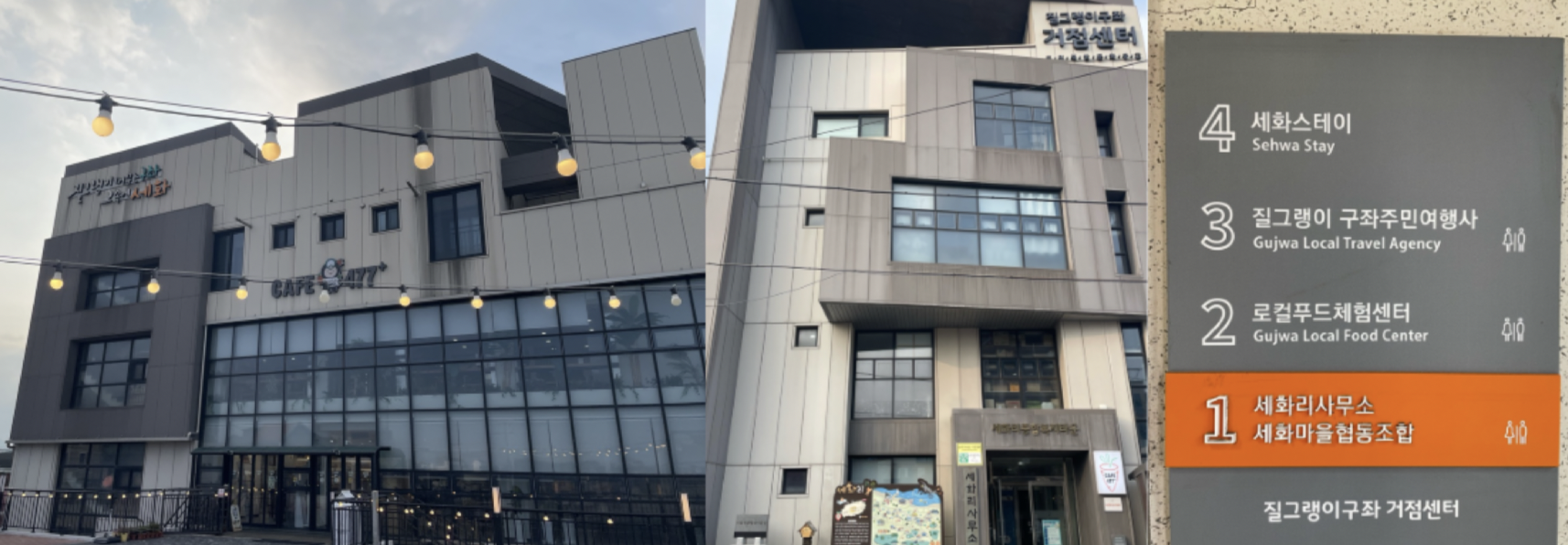
On the first floor, the Sehwa Village Cooperative supports the Momojang (a local market) to promote the local economy. It is held every 5th of the month from 11:00 AM to 2:00 PM at the Jilgeuraengi Center, and during the summer months, an evening market is also operated. On the second floor, Café 477+ is a village café created by the residents of Sehwa Village. The “477” represents the 477 members who initially came together, and the “+” symbolizes the visitors who come to Sehwa. Within Café 477+, the Momojang Self-Service Shop sells products from local market vendors. This space is designed to sell items from the village-led flea market, Momojang, in an unmanned manner. The products change every month to introduce a variety of new sellers.

The Village Postcards are created using photographs taken by residents of Sewa Village. Every six months, a photography contest is held for the local community, and five winning photos are selected through a public vote to be made into postcards. Photos submitted by travelers who stayed in Sewa are also considered for selection. The chosen photos are printed as postcards, and the contributors often receive a small gift from the village as a token of appreciation. The necklaces and bracelets that were once sold at Momo Market were handmade by a local guide working at Darangshi Oreum. They painted on fallen camellia berries and stones to create unique, nature-inspired accessories. All proceeds from the sales are used entirely for the preservation of Darangshi Oreum. In addition to these, a variety of other handmade products—such as natural soaps, pouches, and handkerchiefs—were also available for purchase, each item reflecting the heart and spirit of the village.
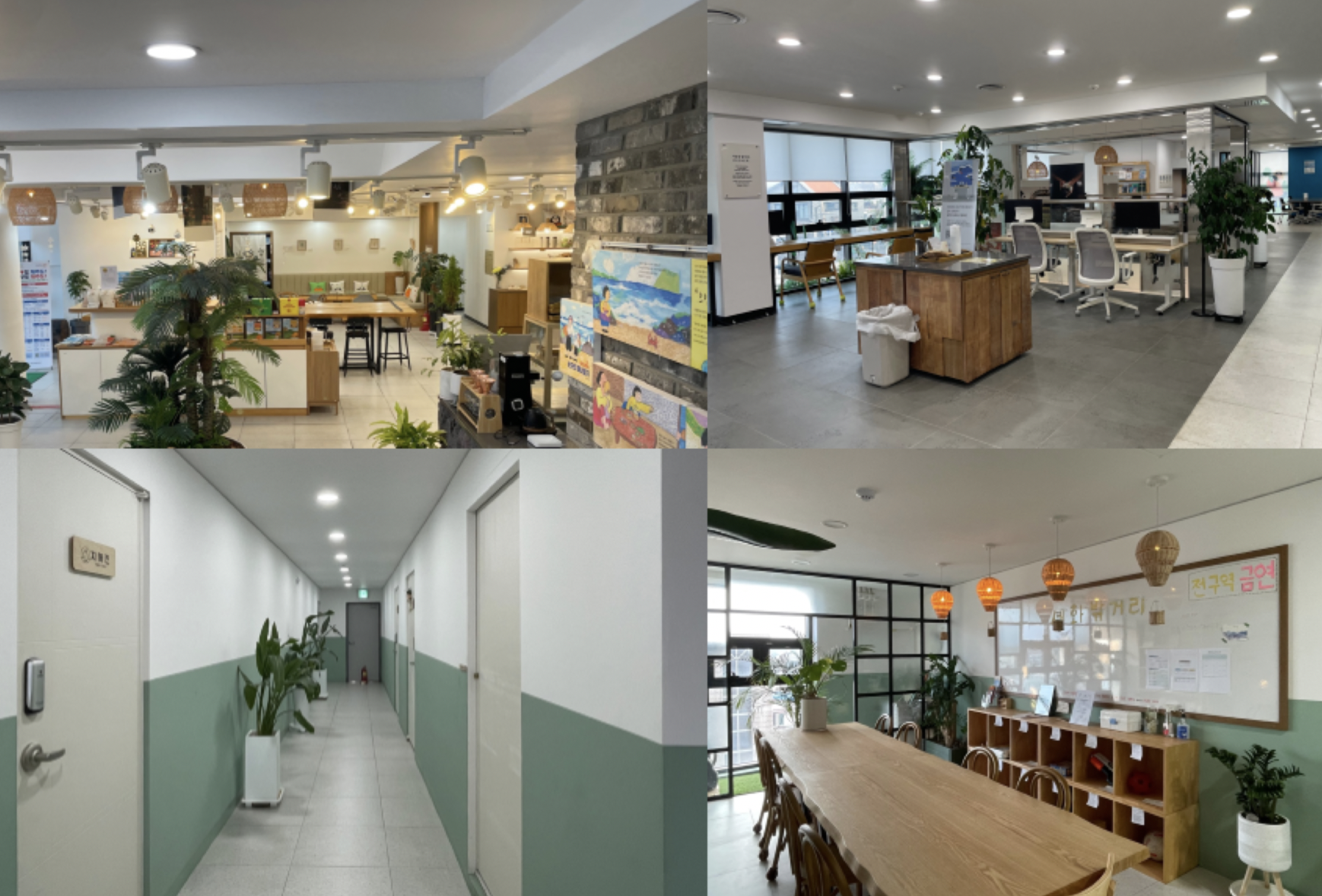
The 3rd floor houses the Sewa Shared Office, a co-working space where guests staying at Jilgeuraeng-i can focus on their business or work. A seminar room is also available, making it a great place for clubs or hands-on programs. The 4th floor, called Sewabakk Street, is a Jeju-style stay accommodation that welcomes groups, large families, small families, and solo or duo travelers alike. In Jeju, there is a unique traditional housing concept called “Angeori” and “Bakkeori.” Within a single fence, two separate houses are built—Angeori for the elderly parents, and Bakkeori for their adult children and spouses. Inspired by this tradition and the spirit of offering a place to loved ones, Sewabakk Street was created as a warm, welcoming space. One particularly unique feature is the Traveler’s Sharing Table—a free donation table where departing travelers leave behind items they no longer need, and arriving travelers are welcome to take and use them.
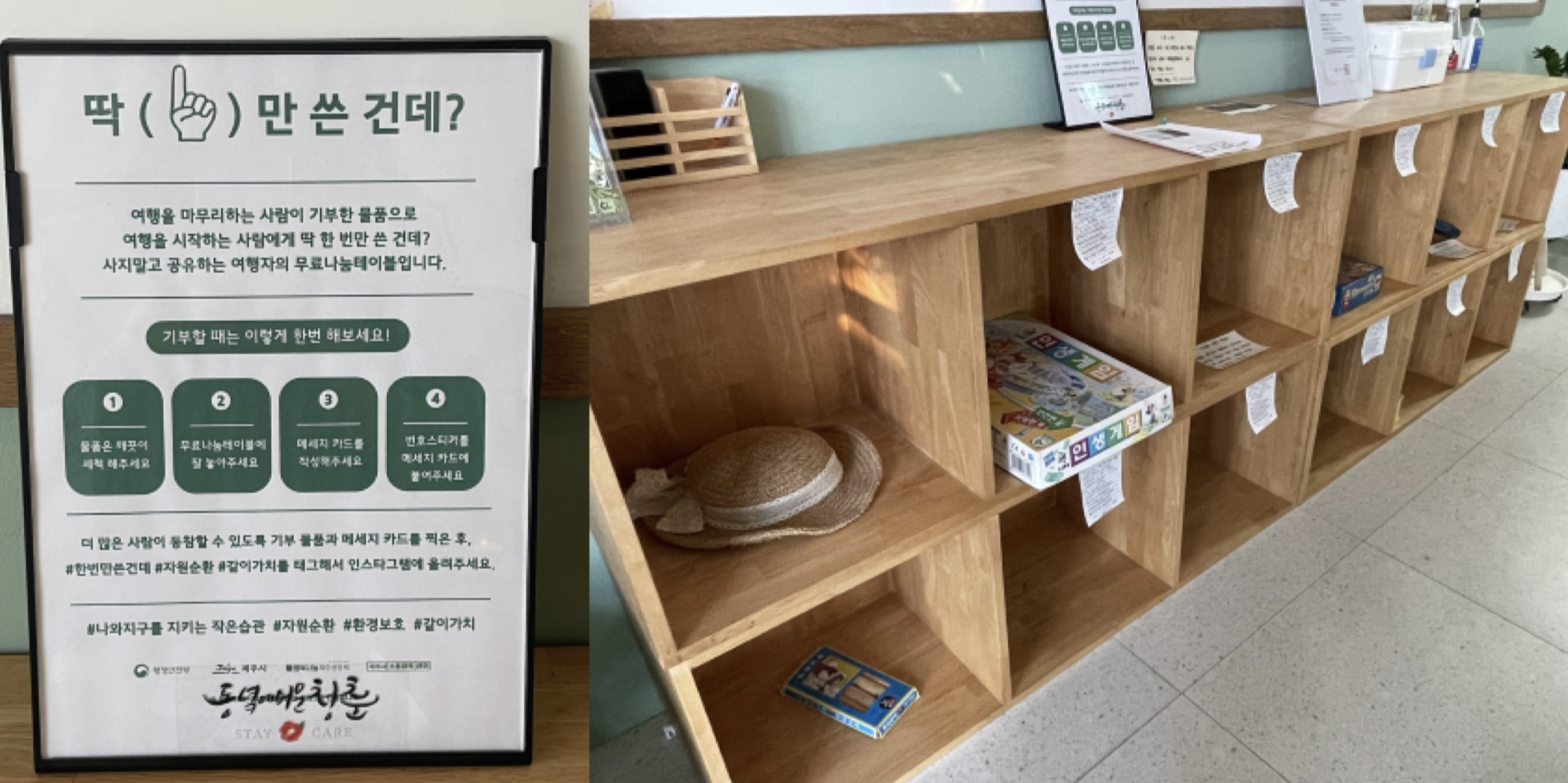
Dongbaek Village
The village of Dongbaek Village (formerly Sinhung 2-ri), where around 500 residents have long cultivated vibrant orange tangerines with care, began its journey with camellias in 2007 by officially changing its name to Dongbaek Village (Camellia Village). The transformation began with a project to designate and preserve the camellia grove located in the heart of the village—the site of the village’s founding and Jeju Local Monument No. 27—as a shared community resource. In 2009, as part of a village-wide initiative, the community built the Dongbaek Village Mill, where camellia oil was produced and developed into a local specialty product, helping the village build a unique identity. Thanks to these efforts, the camellia grove received national recognition, winning the Harmony Award and Forest Steward Award at the National Beautiful Forest Competition. In late 2011, Jeju Dongbaek Village was designated as a Rural Experience and Recreational Village, and since 2013, it has been offering hands-on experience programs centered around camellias.
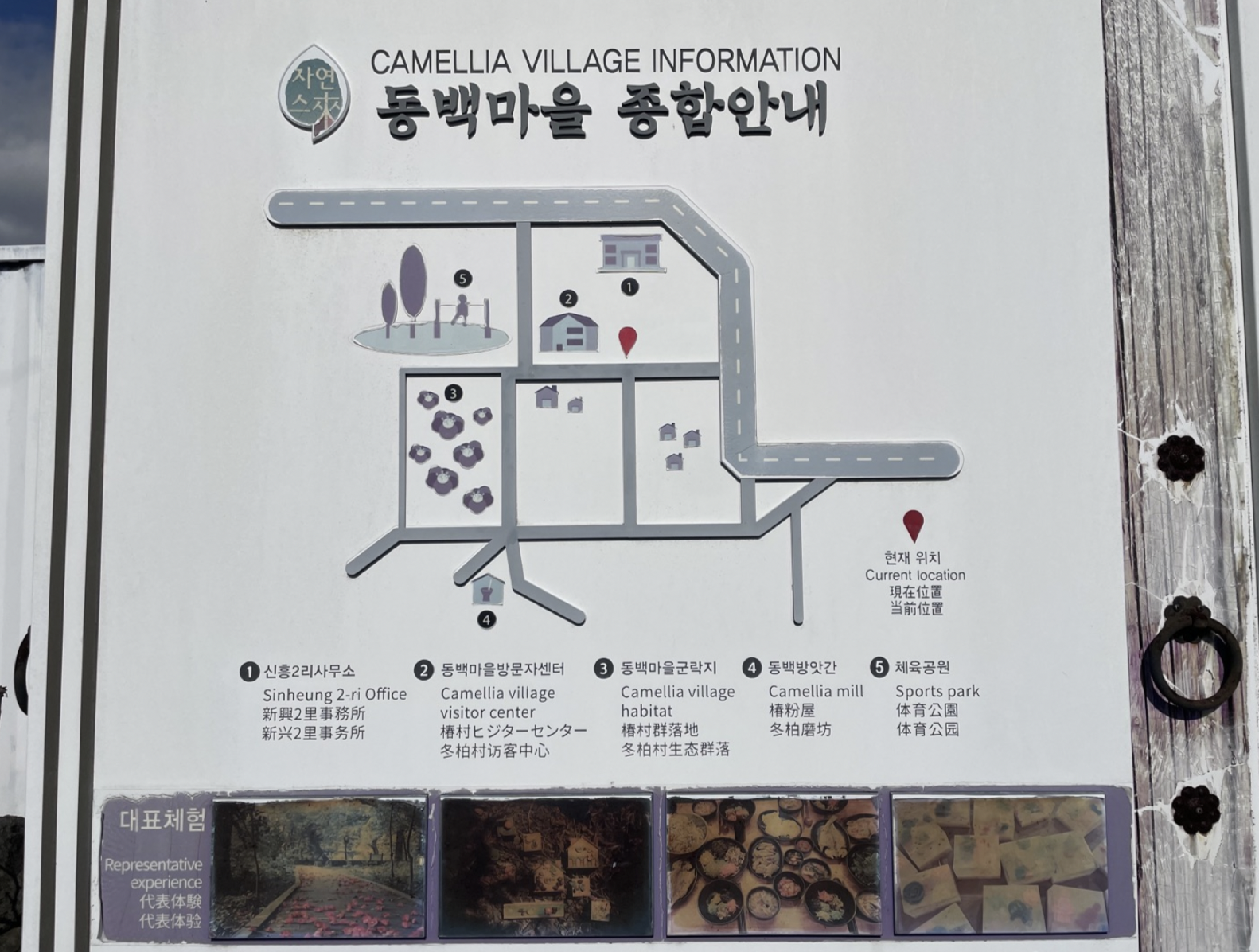
Dongbaek Village offers various hands-on experience programs using native Jeju camellias, primarily for group tourists of 10 or more. Programs include camellia craft workshops, camellia soap making, and culinary experiences using edible camellia oil. Additionally, visitors can join guided tours of the village’s symbolic camellia grove through the Camellia Forest Exploration program. For smaller groups or individual travelers, there are also workshops available such as making camellia skin care products and camellia multi-oil.
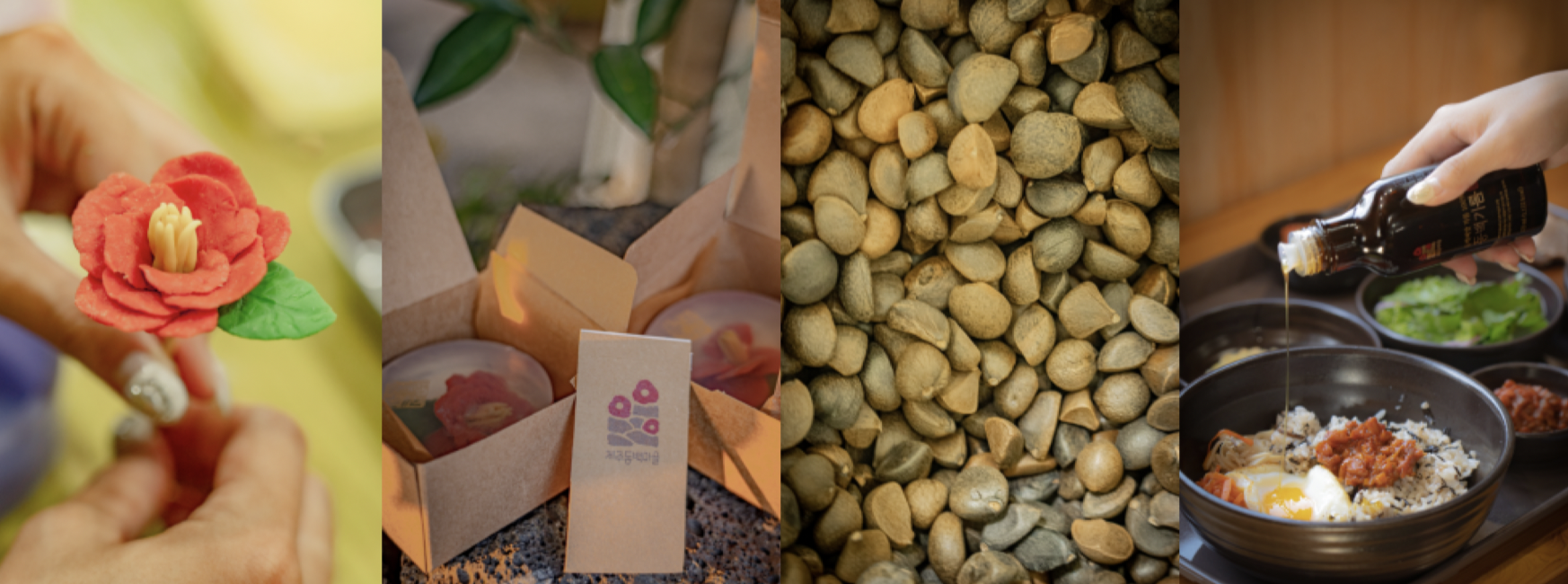
(Source: VISIT JEJU)
When camellia berries are fully ripe and begin to fall from the trees, they do not all drop at once; instead, they fall gradually over about two months. This means the berries must be collected one by one every day. Camellia trees grow slowly and need to mature for more than 30 years before producing enough berries to yield a single 160ml bottle of camellia oil. During the day, villagers focus on their main work of cultivating tangerines, and in the evenings, they gather at the Dongbaek Village mill to handpick each camellia berry. Using traditional pressing methods, they extract and package the camellia oil by hand.
– Dongbaek Region Conservation Research Association
The Dongbaek Region Conservation Research Association is a residents’ self-governing organization responsible for managing the development projects of Dongbaek Village. As a nonprofit incorporated association, it operates under the principle of not distributing profits generated from the camellia-related business. Instead, part of the earnings is returned to the village and reinvested into projects that benefit the community, such as programs for the village elders and children, as well as efforts to maintain and beautify Dongbaek Village. Any village resident who wishes to contribute to the development of Dongbaek Village is welcome to participate.
Operation Plan for KaReum Stay
Customer Communication
KaReum Stay engages with customers through four main channels:
1) EARNED MEDIA: Spreading the word through positive reviews and personal recommendations.
2) SHARED MEDIA: Customers sharing their experiences of the village on social media.
3) PAID MEDIA: Promoting the village travel experience via search engine and social media advertisements.
4) OWNED MEDIA: Sharing stories about the village and its people through KaReum Stay’s website and social media platforms.

Core Brand Structure
KaReum Stay strives to provide the best customer experience through three key elements: hardware, software, and humanware.
1) Hardware: Physical spaces such as accommodations, cafés, restaurants, and experience centers that reflect the unique characteristics of the village, with cleanliness as a basic standard.
2) Software: Content exclusive to the village, including storybooks introducing the village, flagship products, and experience programs.
3) Humanware: The attitude and skills of KaReum Stay hosts who operate the spaces and warmly welcome visitors.

(Source: KaReum Stay Brand Book)
3. Slow Jeju
Sistainable City, Jeju
Jeju, designated as a Biosphere Reserve
As of 2020, there are 714 UNESCO Biosphere Reserves designated across 129 countries worldwide. Jeju Island was first designated as a UNESCO Biosphere Reserve in 2002 and was expanded in 2019. The designated area now includes the entire island of Jeju as well as the marine zone within 5.5 kilometers of its coastal boundaries.
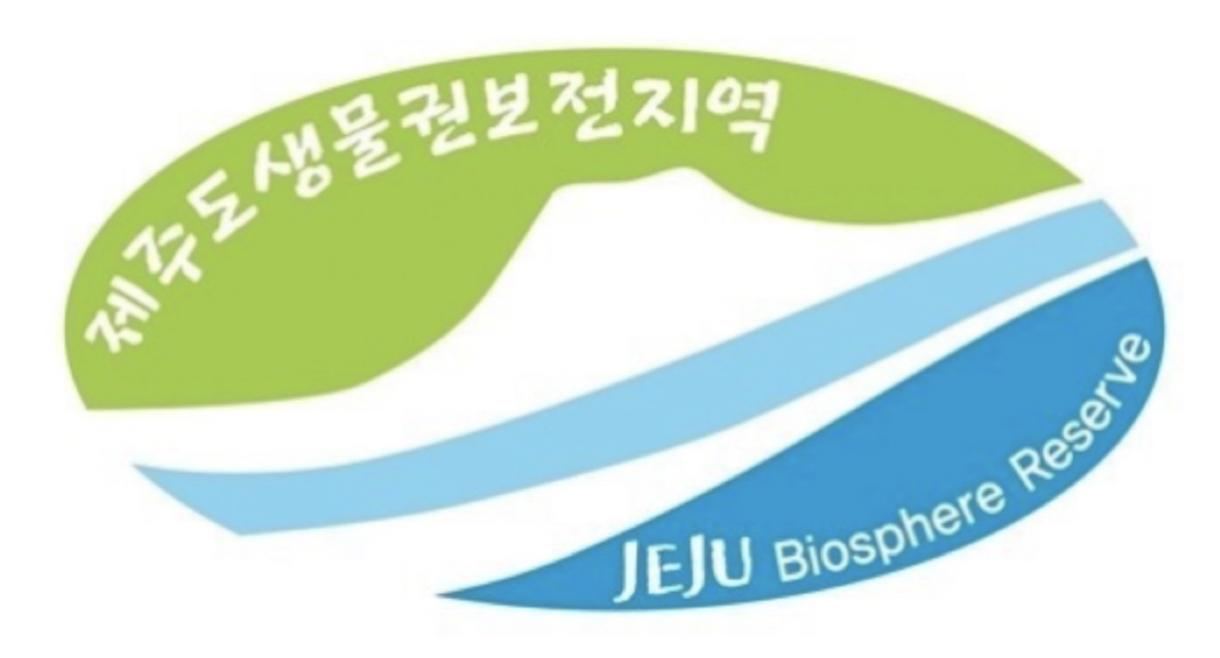
Biosphere Reserves combine scientific knowledge with participatory governance to achieve the following goals:
- Reduce biodiversity loss
- Improve the quality of life for local residents
- Enhance social, economic, and cultural conditions for environmental sustainability
Biosphere Reserves integrate the following three functions:
- Conservation of biodiversity and cultural diversity
- Socio-cultural and environmentally sustainable economic development
- Support for research, long-term monitoring, education, and training
생물권보전지역이 주민들에게 주는 혜택
- Residents can attach the “Jeju Biosphere Reserve Logo” to agricultural and forest products produced in the region when selling them. Products bearing this logo gain a positive image as clean and environmentally friendly goods, which helps increase their added value.
- Additionally, residents can attract many ecotourists to the village by showcasing the unique ecosystem and well-preserved natural landscapes of the biosphere reserve. These ecotourists contribute to revitalizing the local economy by purchasing locally produced goods and spending on travel expenses within the village.
- Residents who earn income reinvest a portion of their earnings back into ecosystem conservation. This creates a virtuous cycle community where ecosystem preservation, improved quality of life for residents, and sustainable regional development occur simultaneously.
Jeju Island’s Efforts for Sustainable Tourism
Jeju Island has established a Carbon Neutrality and Green Growth Master Plan that is 15 years ahead of South Korea’s national goal of carbon neutrality by 2050, aiming to achieve a carbon-neutral society by 2035. The master plan places special emphasis on a major transition to renewable energy and clean hydrogen-based energy sectors as the core strategy for carbon neutrality. Additionally, Jeju plans to achieve zero plastic waste by 2040 by converting all packaging used for transportation within the island and for deliveries sent to Jeju into reusable packaging materials. A commonly seen initiative in Jeju is the deposit system for disposable cups. When purchasing a drink in a disposable cup, a recycling deposit is charged, which is refunded in full when the cup is returned after use.
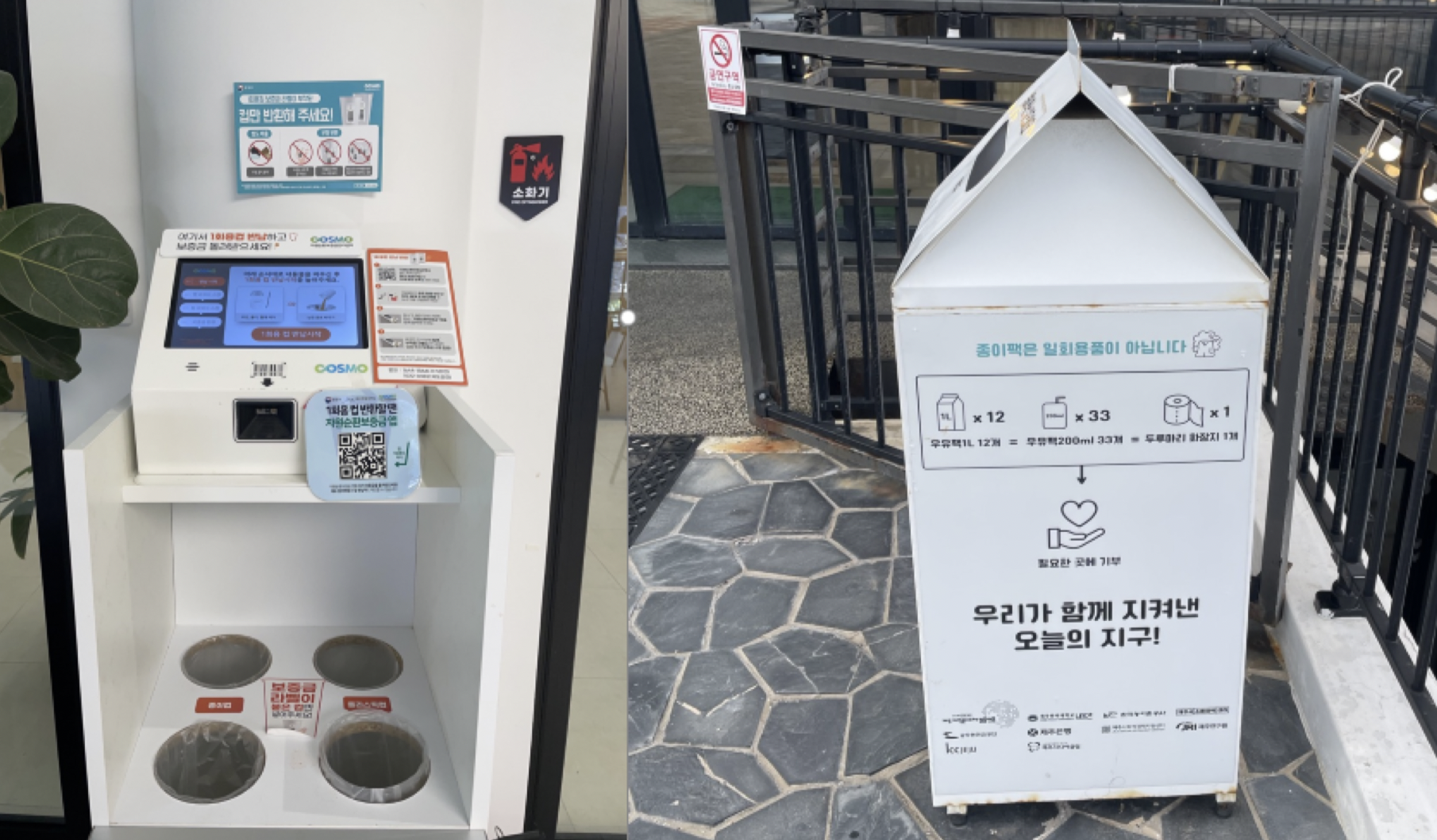
Businesses with more than 100 stores (including coffee shops, beverage outlets, bakeries, and fast-food restaurants) are required to participate in the disposable cup deposit system. As of October, the participation rate among eligible stores in Jeju stands at 51.7% (277 out of 536 stores). Customers can receive a recycling deposit refund when they return disposable cups. Stores that voluntarily participate will be designated as Excellent Recycling Businesses and will receive support for operational supplies.
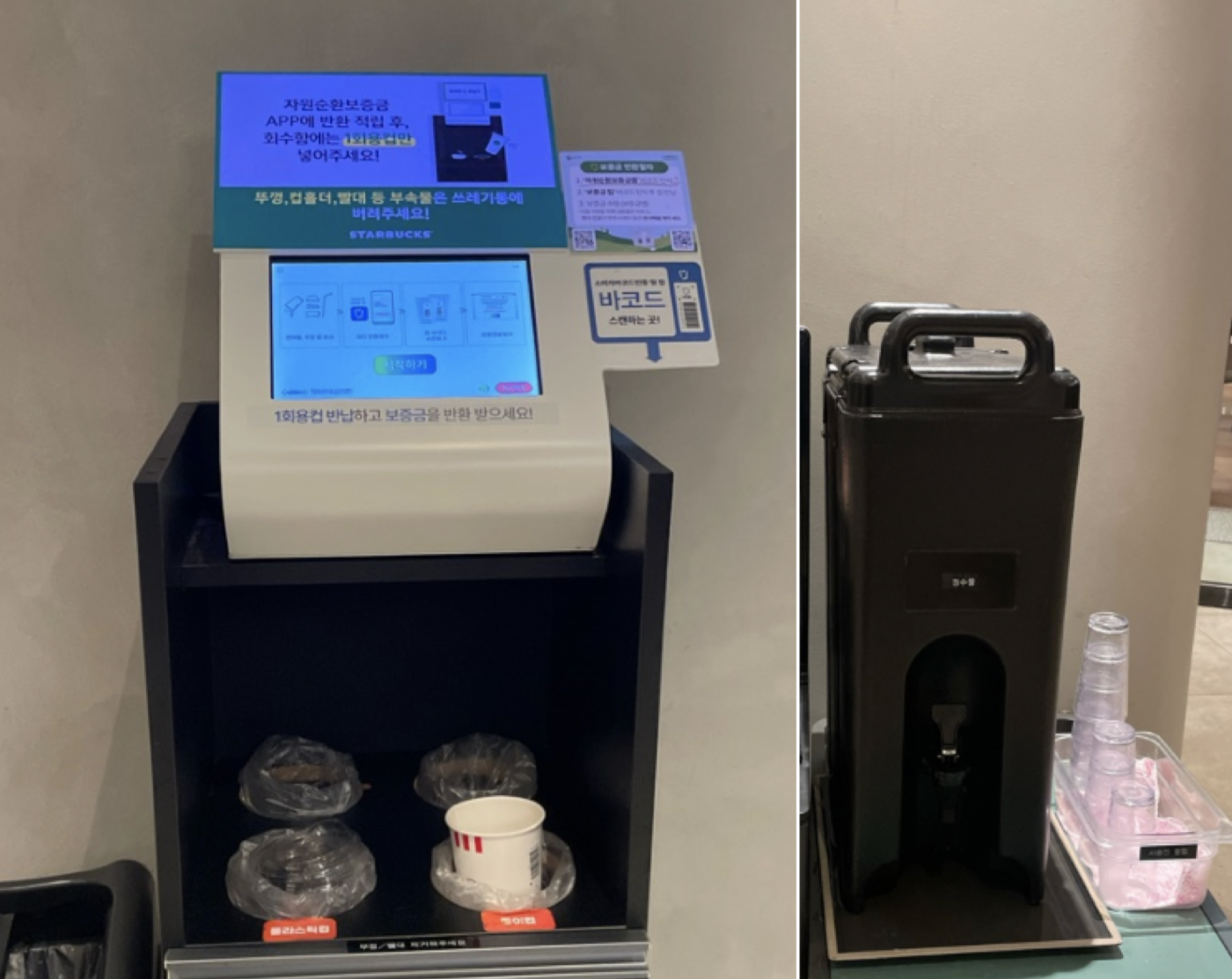
Map of Plastic-Frees
You can visit disposable-cup-free cafes on Udo Island through a collaboration between Jeju Special Self-Governing Province’s Resource Circulation Division and The GREET reusable container company. When ordering a drink, customers pay a 1,000 KRW cup deposit, which is refunded upon returning the cup to an unmanned return station. Additionally, customers receive a 1,000 KRW discount when ordering with a reusable cup (valid until September 30, 2024).
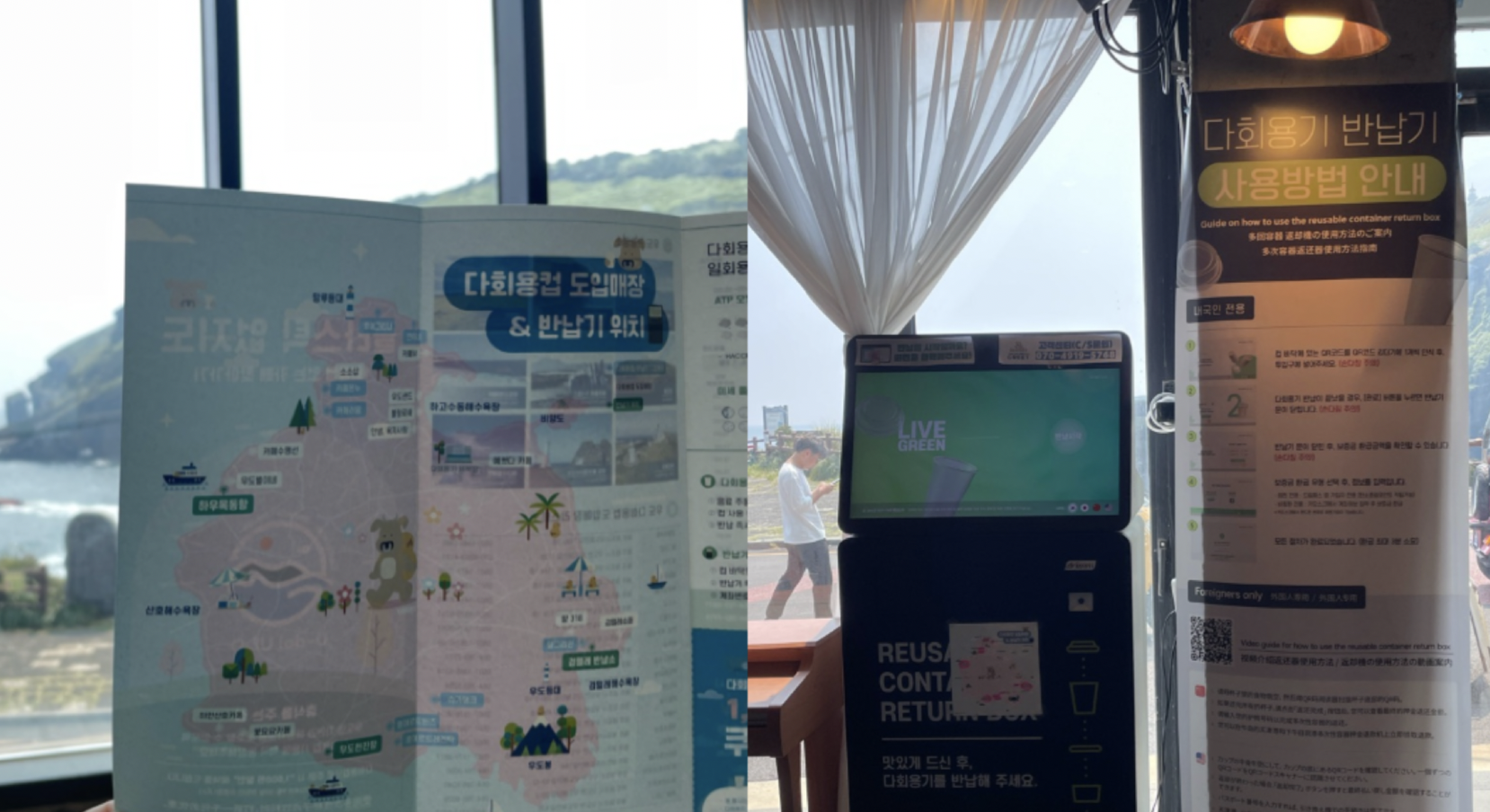
Earth Star Mineral Spring 1)
Stores and shops in Jeju that provide drinking water In Jeju, there are “Earth Star Mineral Springs” that offer free water to users who bring their own cups instead of buying plastic bottled water. Currently, more than 140 Earth Star Mineral Springs are operating throughout Jeju Island.
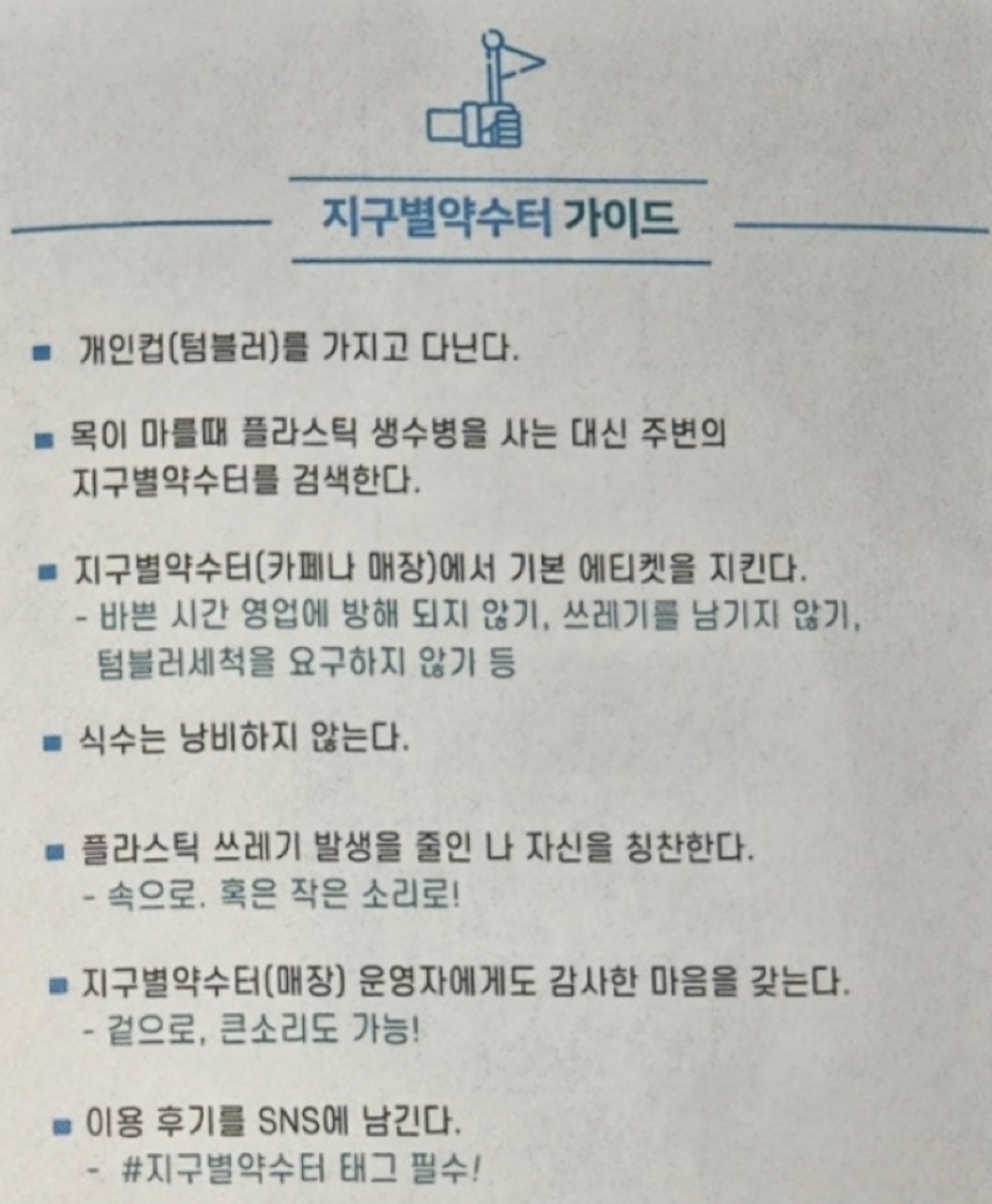
Additionally, at the Dongmun Market Food Town and Food Market, tourists were observed carefully separating their waste, showing a strong awareness and consideration for the environment.
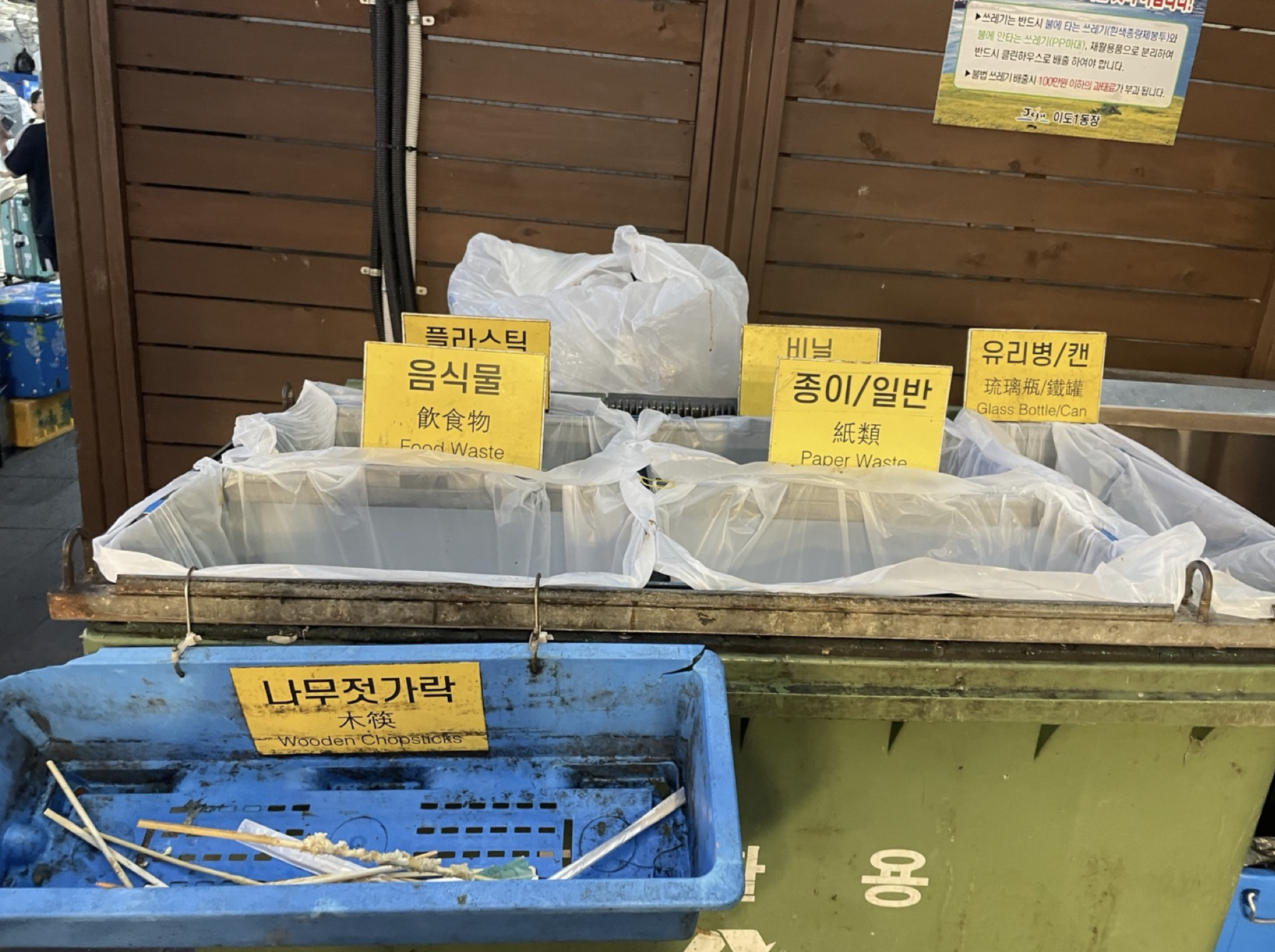
4. Conclusion
KaReum Stay, a village travel experience in Jeju, offers communication with local residents and allows travelers to enjoy a healing journey beyond simple tourism. Jeju Island is one of the most desirable vacation destinations in South Korea, but since it is about three times the size of Seoul, it is difficult to see the entire island in one trip. According to the 2023 Jeju Special Self-Governing Province Visitor Survey, domestic tourists stayed for an average of 3.65 days, roughly a 3-night, 4-day trip, with little variation depending on respondent characteristics. Foreign tourists, on the other hand, stayed longer, averaging 4.74 days or about 4 nights and 5 days. Most domestic and international visitors come to Jeju for vacation and pure travel purposes, and when choosing travel destinations, they place great importance on enjoying the natural scenery. Because both domestic and international tourists tend to rush through famous tourist spots within 4 to 5 days, high carbon emissions are inevitable. Even I, while researching cases, couldn’t stay long in one place and often drove around by rental car during my short trip. However, new travel styles like “living in Jeju for a month” or “workation” are steadily increasing, and through KaReum Stay’s experience programs, travelers can coexist and thrive together with the local villagers.
To promote sustainable travel in Jeju, it is important not to take visitors’ inconveniences in reducing carbon emissions for granted, but rather to offer rewards through unique experiences that can only be had at those locations. During my trip in Jeju, I visited places that had a lot of information on blogs. However, the information was often outdated, making it unclear whether those places were still operating, and sometimes I encountered ongoing construction, resulting in wasted trips. Currently, many pamphlets and booklets are distributed across Jeju, and a wealth of information is spread on blogs and websites. To build trust with travelers, it is crucial to provide updated information through official websites and maintain consistent communication.
In a rapidly changing world, sustainable travel may not always meet the diverse needs of travelers seeking various experiences. However, it is hoped that, at least occasionally, people can find rest and reduce carbon emissions from tourism by embracing different forms of sustainable travel.
Footnote
- Stores and shops in Jeju that provide drinking water
References
- 뉴스제주 (2024.08.29.) 제주 ‘웰니스 관광’, 아시아·태평양 우수사례로 우뚝.
- 서울신문 (2024.12.16.) 제주도 1회용컵 보증금제는 계속된다… 자발적 참여매장 또 늘었다.
- 세화마을 협동조합 홈페이지
- 제주특별자치도 제주관광공사 (2024.11.26.) 2023년 제주특별자치도 방문관광객 실태조사- 정량조사 결과보고서.
- 제주도민일보 (2023.10.20.) 유엔세계관광기구 최우수 관광마을에 세화리·신흥2리 선정.
- 제주동백마을 공식 홈페이지
- 제주일보 (2023.10.21) 세화리·신흥2리, 세계인이 주목한 ‘최우수 관광마을’.
- Global Compact Network Korea (n.d.) 지속가능한 여행.
- 카름스테이 공식홈페이지.
- 카름스테이 브랜드북.
- 헤드라인 제주 (2024.06.07) ‘2035 탄소중립’ 실현 선포 제주도, 총력적 탄소감축 ‘시동’.
- ESG경제 (2023.05.10.) 제주도, ‘2040년 플라스틱 제로’ 계획…1조원 넘게 투입.
- UNWTO (2023.06.) Goa Roadmap for Tourism as a Vehicle for Achieving the Sustainable Development Goals.
- UN Global compact
- VISIT JEJU (2023) 신흥2리 동백마을.
- World Economic Forum (2024.01.12.) How travel and tourism can reach net zero.



